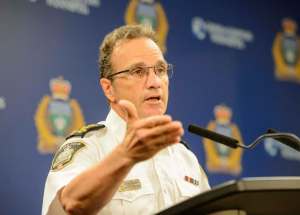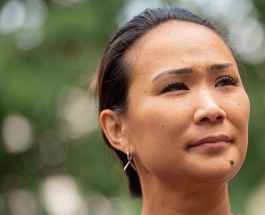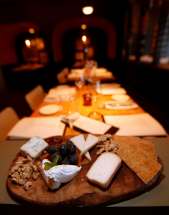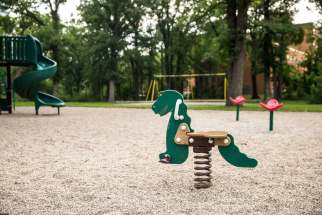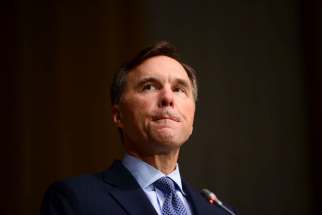Xs, Os and here we go We break down the most surreal Stanley Cup playoffs ever — 24 teams, two bubble cities and plenty of self-isolating in hotel rooms
Read this article for free:
or
Already have an account? Log in here »
To continue reading, please subscribe:
Monthly Digital Subscription
$0 for the first 4 weeks*
- Enjoy unlimited reading on winnipegfreepress.com
- Read the E-Edition, our digital replica newspaper
- Access News Break, our award-winning app
- Play interactive puzzles
*No charge for 4 weeks then price increases to the regular rate of $19.00 plus GST every four weeks. Offer available to new and qualified returning subscribers only. Cancel any time.
Monthly Digital Subscription
$4.75/week*
- Enjoy unlimited reading on winnipegfreepress.com
- Read the E-Edition, our digital replica newspaper
- Access News Break, our award-winning app
- Play interactive puzzles
*Billed as $19 plus GST every four weeks. Cancel any time.
To continue reading, please subscribe:
Add Free Press access to your Brandon Sun subscription for only an additional
$1 for the first 4 weeks*
*Your next subscription payment will increase by $1.00 and you will be charged $16.99 plus GST for four weeks. After four weeks, your payment will increase to $23.99 plus GST every four weeks.
Read unlimited articles for free today:
or
Already have an account? Log in here »
Hey there, time traveller!
This article was published 24/07/2020 (1968 days ago), so information in it may no longer be current.
EDMONTON — Pull up a lawn chair, slap on some sunscreen and grab your favourite frosty beverage. Hard as it is to believe, what once seemed like nothing more than wishful thinking for sports fans is about to become reality.
Yes, the summer of puck is upon us, featuring the most surreal Stanley Cup playoffs in NHL history.
More than 1,200 players, coaches, management and support staff will wrap up their July training camps and fly to Edmonton and Toronto on Sunday — then immediately go into secure bubbles, where their movements will be severely regulated and carefully monitored to help mitigate the risk of a pandemic that has infected more than 15 million people and killed more than 630,000 around the globe.
Every visitor has no clue if they are saying goodbye to loved ones back home for as little as 10 days — or as long as two-and-a-half months. Games will be held in empty rinks without fans at all hours of the day, teams will be staying in the same hotels like they did during minor-hockey tournaments, swabs up the nose will be as much a part of the typical daily routine as taping your stick or having an afternoon nap, and all interviews will be conducted via Zoom.
All 24 teams still in the hunt will have a quick dress rehearsal next week in the form of an exhibition game before the curtain rises on Aug. 1.
“We are about to embark on one of the most unique and challenging endeavours any of us have ever been involved with,” NHL Commissioner Gary Bettman said Friday during a video call with media.
No kidding. Keep in mind all of this happening at a time where we’re still grappling with COVID-19 throughout North America. In fact, the numbers are far worse than they were in mid-March, when the sports world came to a screeching halt. No, there’s still not a vaccine.
And yet, here we are. If 2020 had an official slogan, you could do a lot worse than “Who the heck knows what’s going to happen next.”
That’s the main reason I’ve packed up the rental car and made the 13-hour drive west for the most unusual road trip of my life. I have no idea how long I’m staying, but I can tell you I’ll be on the ground in Edmonton and inside Rogers Place to cover this once-in-a-lifetime event, documenting what this all looks, sounds and feels like while also keeping a close eye on the Winnipeg Jets.
It should be quite a ride.

OK, but why is this even happening?
Cold, hard cash. As in, trying to stem off potentially $1 billion in losses if the season can’t be salvaged. The league and its players are still going to take a financial bath, but there are rough estimates the damage could be halved if they can pull off this made-for-TV event.
This isn’t just a case of rich, greedy owners wanting to stop the bleeding. Players, especially those without the security of long-term contracts, are also trying to protect future earnings which would be gutted by a reduced salary cap if this all falls apart. Despite the obvious health risks, that explains why a league-wide vote resulted in nearly 80 per cent (502-135) ratifying the agreement hammered out by the NHL and NHLPA earlier this month.
One silver lining to all of this is that a four-year CBA extension accompanied the return-to-play protocols, including 2022 and 2026 Olympic participation and a new financial framework going forward.
Did anyone opt out?
Six NHL players took advantage of a clause in which they could decline to participate without any team or league sanctions. Calgary’s Travis Hamonic, Edmonton’s Mike Green, Vancouver’s Sven Baertschi, Montreal’s Karl Alzner, Boston’s Steven Kampfer and Dallas’ Roman Polak all said ‘Thanks, but no thanks’, citing personal reasons.
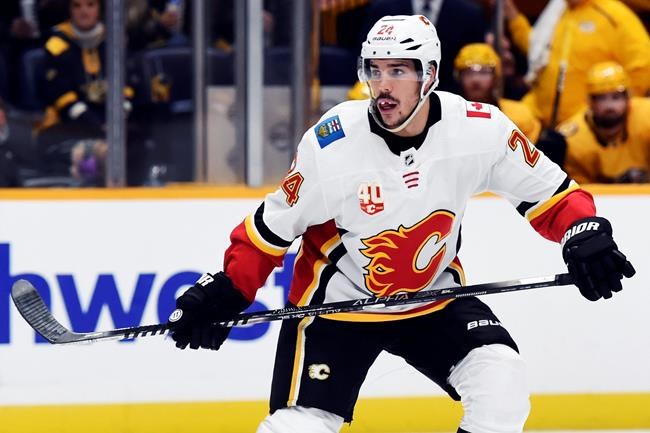
Why Edmonton and Toronto as hubs?
The NHL didn’t want it this way, preferring to have one Canadian and one American market. But rapidly rising COVID-19 numbers south of the border left the league with no choice if they didn’t want to be portrayed as heartless ghouls. And so some short-listed candidates such as Las Vegas, Los Angeles and Dallas were given the heave-ho.
Vancouver was in the running, and the early favourite, but health officials there wouldn’t bend their rules regarding contact tracing (they wanted all close contacts of an infected person to be quarantined), so the league went to a pair of northern neighbours who would. Time will tell if that comes back to bite them.
“Our goal in this entire endeavour is to be perfect. But we’re not living in a world of perfect. We’re going to do everything we can to make things as good as they can be. Things will evolve. But what we want to make sure of from the outset is we limit the likelihood and risk of missteps,” said Bettman.
No other Canadian cities put in a bid. Sure, Winnipeg has kept the curve flatter than any other NHL market, but a lack of infrastructure (specifically high-end hotel rooms for a dozen teams) made it a moot point.
Are these legitimate playoffs?
If you’re a glass half-full kind of person, you may believe these are better-than-ever, with 50 per cent more teams (24 instead of 16) and an eventual champ who may have to win 19 games and five rounds (instead of the usual 16 games in four rounds). Throw in the fact there’s no true home-ice advantage and everyone is coming off the same four-month hiatus to get healthy and there’s a convincing argument to be made this Cup will the hardest one to win.
If you’re a glass half-empty kind of person, you probably think this is a farce, with obvious non-playoff teams like Montreal and Chicago being allowed in simply to boost interest in major hockey markets. Just imagine if one of them ends up winning it all? There likely won’t be an asterisk big enough for your liking beside their name on Lord Stanley.
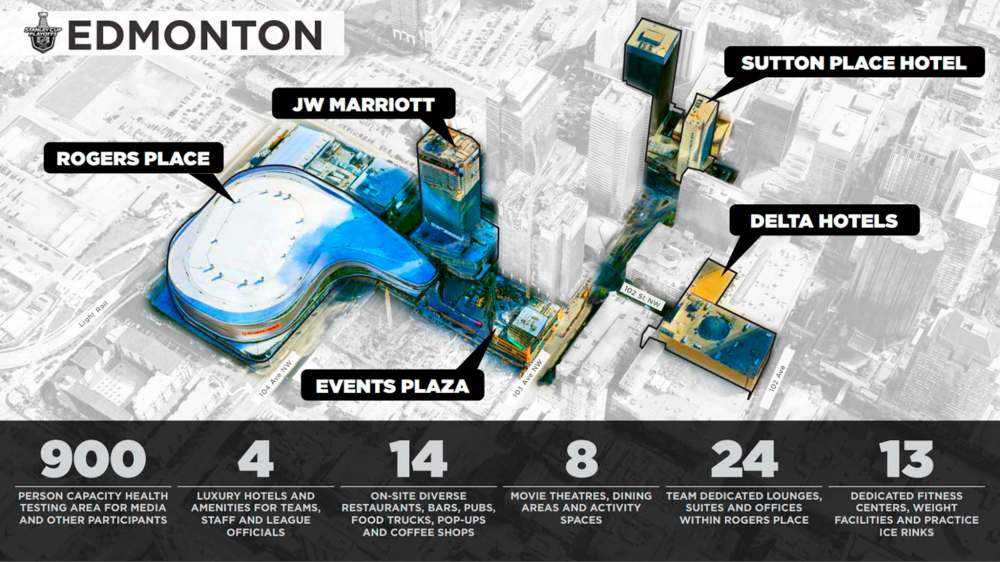
How does it work for 24 teams?
The top four teams in each conference (eight in total) get a bye straight to the traditional round of 16, but they’ll stay busy in the first 10 days by playing a round-robin tournament against each other to determine the No. 1 through 4 seeds.
This gives them something worthwhile to do while the other 16 teams fight for their lives in best-of-five qualifying series happening at the same time. The eight “play-in” winners move on to the round of 16, while the eight losers each have a 12.5 per cent chance at drafting 18-year-old phenom Alexis Lafrenière.
Wait, what?!
As if there weren’t enough juicy storylines, how about this one: A speedy exit is going to be the best thing that could have happened for one lucky franchise.
A mystery placeholder “won” the draft lottery last month and the right to the No. 1 overall pick, leap-frogging the seven worst teams in the NHL who all had much greater odds, including sad-sack squads like Detroit and Ottawa. Upon completion of the qualifying round, a draw will be held to see which “loser” gets the teen viewed by many as a generational talent.
So, yeah, imagine Sidney Crosby and the Pittsburgh Penguins welcoming Lafrenière to town. Or how about Connor McDavid and the Edmonton Oilers adding him to the arsenal. Or, if you’re a Jets fan, adding the kid to a forward group that already boasts Mark Scheifele, Patrik Laine, Kyle Connor, Blake Wheeler and Nikolaj Ehlers.

How many people can teams bring into the bubble?
Each club is allowed a maximum of 51, including 31 players and 20 coaches and staff. The Jets, for example, currently have 33 players at their training camp, so two cuts will have to be made this weekend assuming everyone is healthy. Family members are not allowed until the conference finals begin in mid-September.
Are players going to be held captive in the hotels?
Not quite, but they won’t enjoy the usual freedoms of the road. For the first three days upon arrival, everyone must isolate in their rooms (outside of any on-ice activities). Once cleared, they can mingle with others at designated spots (not inside their own rooms) within the bubble, provided they practise social distancing and wear masks when not playing hockey or working out.
Jets coach Paul Maurice joked earlier this week there was a time in the NHL when a brawl would have erupted in the lobby under these circumstances, but now you’re more likely to see a video game tournament break out.
Nobody is allowed to leave the secure zone (outside of going to and from the playing and practice rinks) for the first 14 days under federal quarantine rules. After two weeks, there may be some organized outings, such as golf excursions, but they will be limited. Activities will be set up inside the bubble including movies and games. Dining, grocery and pharmaceutical deliveries are available, and more than 200 security guards and “health ambassadors” have been hired to ensure compliance.
“Protecting the sanctity of the protective zone, the hub, the bubble, is most and vitally important to ensure that everybody’s health and well-being is taken care of,” Bettman said. “Leaving the bubble is just not something we can tolerate.”
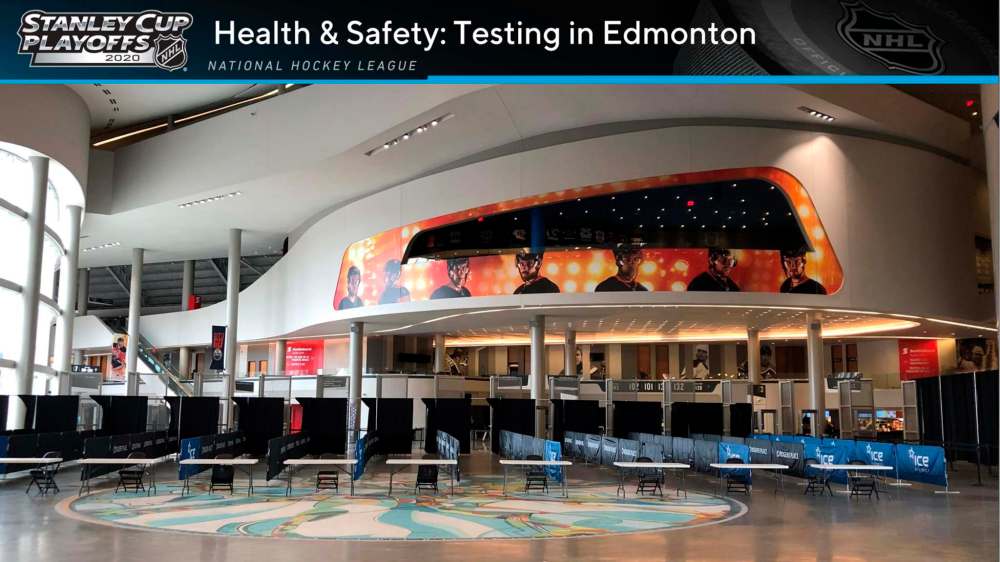
Is everyone being tested for COVID-19?
At this point, everyone is familiar with what Jets forward Andrew Copp recently called the “brain tickler.” All players had to pass three tests over a seven-day span before they could hit the ice for training camp when it began July 13, then continue to be negative when they are tested every other day.
In order to board the private team charter Sunday, they must have cleared three consecutive tests over the past week.
Once in the bubble, players will be tested for COVID-19 daily, along with symptom and temperature checks. Same goes for all team coaches and staff, along with any workers who have contact with those in the secure zone, such as hotel employees.
Who’s paying for all this?
The NHL has secured two private facilities — DynaLIFE in Edmonton and LifeLabs in Toronto — to conduct testing. The league is footing the bill, and insists the tests are not being re-allocated away from public demand. Results are produced within 24 hours. There will also be more than 60 kiosks set up in the two hub cities for touchless symptom and temperature checks.
What if someone gets sick?
Immediate separation and quarantine. A player can only return to action once they have tested negative on two occasions, 24 hours apart, and have no symptoms. Close contacts of that player, such as a teammate, will not have to quarantine, provided they test negative and have no symptoms.
One encouraging piece of news was the fact only two players (out of more than 800) tested positive during the first week of training camps, which are being held in every team’s home market with players not yet living in a secured environment. After 43 players got COVID-19 during Phase 2 (voluntary skates at team facilities), many were likely holding their breath at a potential big jump for Phase 3. It didn’t happen.
How many infections could sink the whole thing?
The NHL hasn’t said, but they have made it clear a few positives won’t spell disaster, provided they are quickly contained. The league will continue working with epidemiological and infectious disease experts along with local, provincial and federal government and health authorities.
“Obviously we’re hoping that once we move into the bubble environment, it’s constructed in a way that does two things. It protects the public, and it protects the people inside the bubble. We don’t expect it to be perfect. We expect with the number of people that we’re going to have some positive tests, but we have a method and a process designed in advance to deal with that,” NHL’s chief medical officer Dr. Willem Meeuwisse said Friday.
How do media have to cover this?
Accredited mainstream media such as myself will be allowed inside the rinks to view the games, but not inside the secure bubbles (unlike the NBA, for example, which did allow a small group of journalists). Those travelling to Edmonton or Toronto from U.S. markets are required to quarantine for 14 days per federal regulations. Those of us who came from other parts of Canada do not. Our pre- and post-game interviews with players and coaches will be done virtually to avoid face-to-face contact.
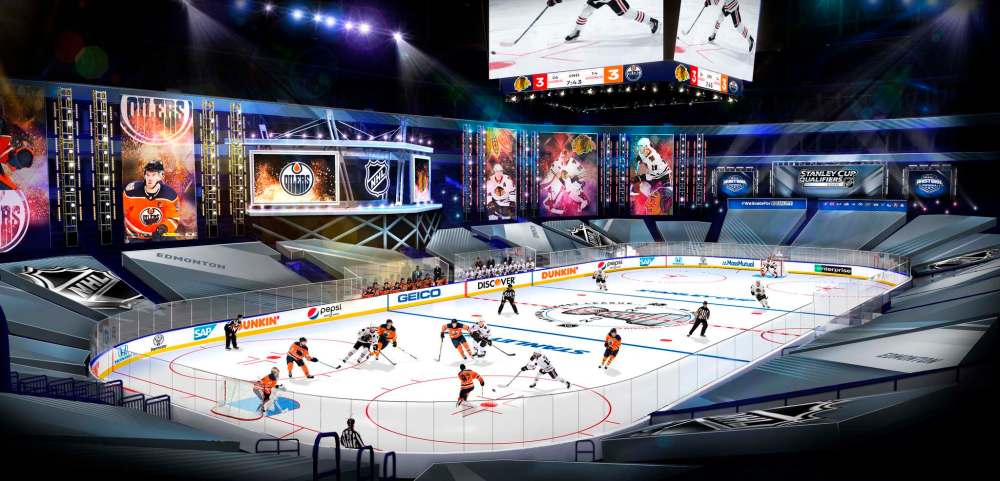
What will the games look like on TV?
Get ready for something very different. The league plans to use numerous LED screens, monitors and stages to block the otherwise empty seats, jazz up the production and give each game a distinctive look and feel.
“We think this will make for a compelling television product,” said NHL senior executive vice- president and chief content officer Steve Mayer. “That will allow us to do some things that are extremely similar to virtual (fans).”
They will also use sound effects from the EA Sports NHL video game franchise to enhance the audio, along with team goal songs, goal horns and fan videos that will replicate some familiar chants and cheers at home rinks. TV networks will use 32 cameras per game, instead of the usual 20, to give angles and views not typically seen.
“We are able to walk around an arena and find the perfect, most ideal positions for every single one of our cameras. It is our goal to be able to show a hockey game in a manner that shows off the speed, and you feel like you’re part of the game,” said Mayer.
“We all want our game to translate better for television. We think that, in this tournament, we’re going to be able to accomplish that because of the way we can bring our fans right inside the game, down low, show the speeds, hear the sounds, and have the energy of the set design and some of the things that we’re planning on doing to make it visually exciting.”
***
Will it be a spectacular success? An epic failure? We’re about to find out.
“This has been an extraordinarily involved, difficult and unusual circumstance,” said Bettman. “The sense that going to the hubs on Sunday is cause for celebration… this is just another step in what has been a long journey. And still has many many miles to go until we get to the ultimate place we’re all striving for, which is the conclusion of the 19-20 season and the presentation of what we all believe is the best trophy in all of sports.”
mike.mcintyre@freepress.mb.ca
Twitter: @mikemcintyrewpg

Mike McIntyre grew up wanting to be a professional wrestler. But when that dream fizzled, he put all his brawn into becoming a professional writer.
Our newsroom depends on a growing audience of readers to power our journalism. If you are not a paid reader, please consider becoming a subscriber.
Our newsroom depends on its audience of readers to power our journalism. Thank you for your support.


